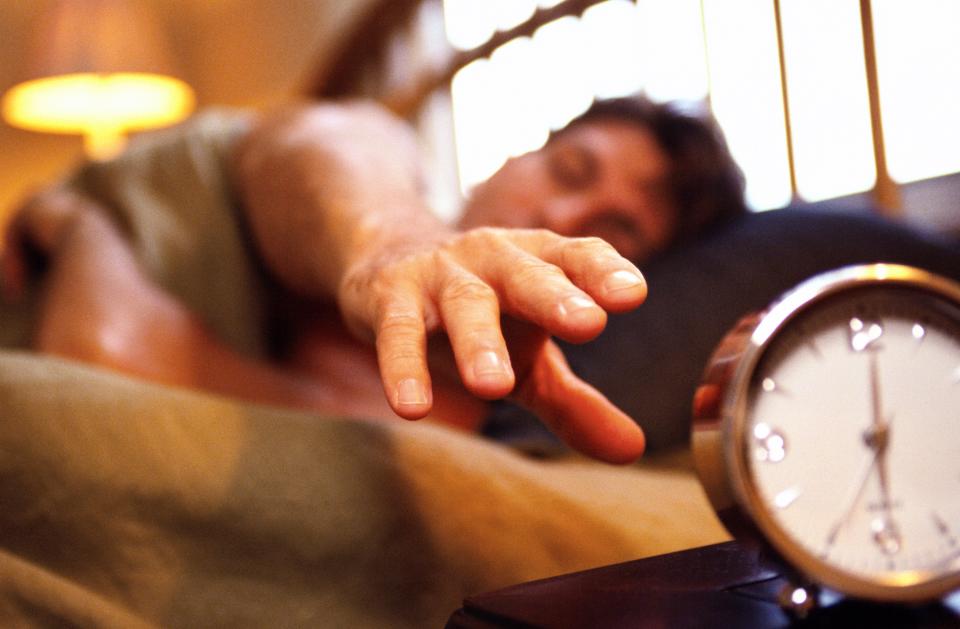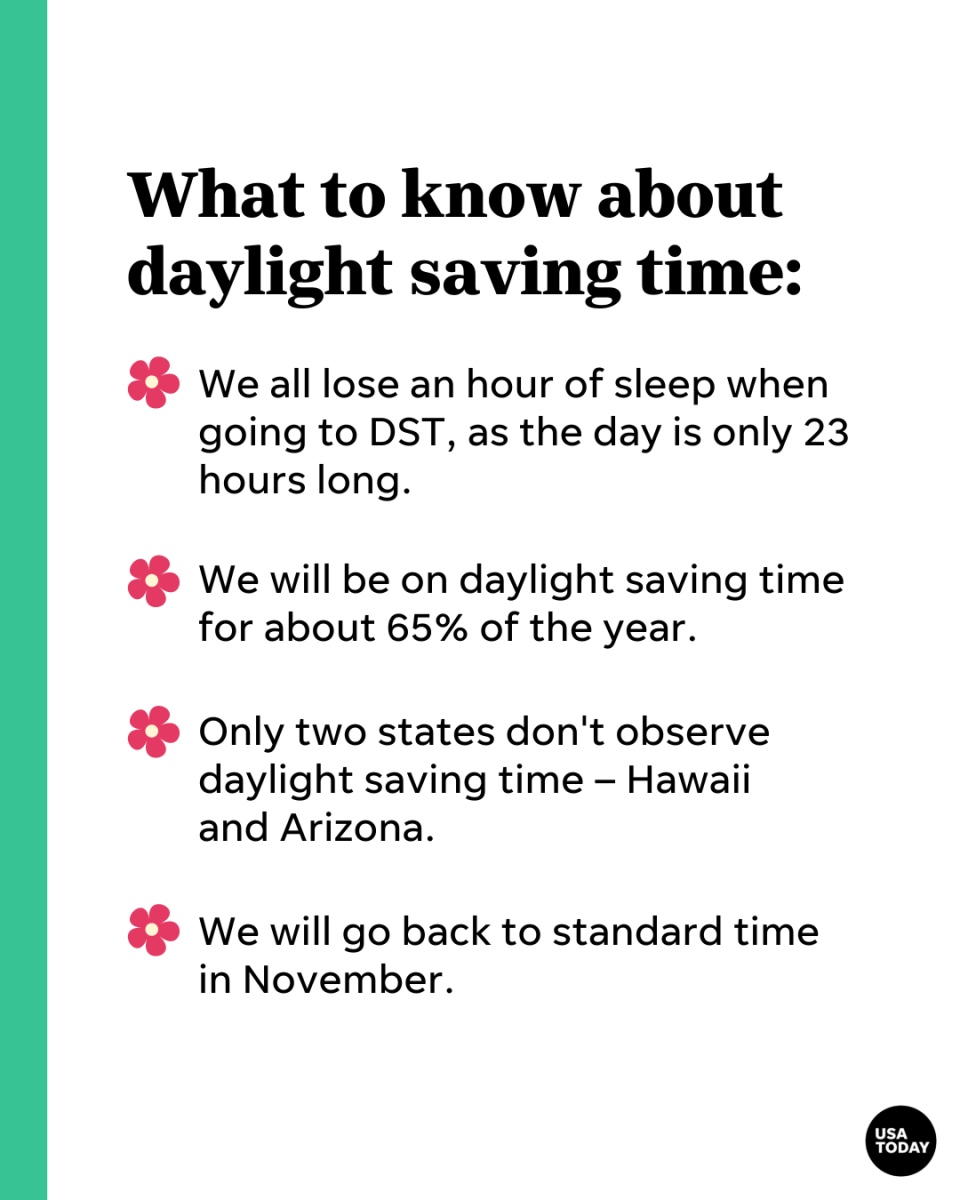DST time change 2024 to spring forward soon. When clocks move for Daylight Saving Time
Daylight Saving Time is rapidly approaching, and in about 10 days most people across the United States will have to change those darn clocks again.
If you're struggling to remember to move your clocks forward or back an hour, no worries. All things DST are covered below, so you can enjoy the warm spring that's expected.
What is daylight saving time saving? Hint: it may not actually be time or money
Here's what you need to know about Daylight Saving Time in 2024:
When does the Daylight Saving time change 2024 occur in U.S.?
Participating states turn clocks forward an hour on the second Sunday in March during the spring. Daylight Saving Time ends on the first Sunday of November in the fall of each year and that's when states turn clocks back an hour.
When does time change spring forward for DST 2024?

In the U.S., clocks will officially spring forward at 2 a.m. Sunday, March 10, 2024.
Do I gain or lose an hour of sleep for Daylight Savings Time at 2 a.m. March 10, 2024?
We lose an hour of sleep when the clocks "spring forward" and are turned ahead at 2 a.m. for one hour when Daylight Saving Time begins.
In the fall when DST ends, clocks "fall back" an hour in November. That is when people gain an hour of sleep.
When does Daylight Savings 2024's time change fall back?
Clocks fall back on Sunday, Nov. 3 in 2024.
Why does Daylight Saving Time change at 2 a.m.?
In an interview with Time Magazine, author Michael Downing cited his book, "Spring Forward: The Annual Madness of Daylight Saving Time," to explain how Amtrak and the railroads were the main reason clocks change at 2 a.m. for DST.
There were no trains leaving the station at 2 a.m. on Sundays in New York City when Daylight Saving Time was established.
"Sunday morning at 2 a.m. was when they would interrupt the least amount of train travel around the country,” Downing said.
Why does daylight saving time exist?: Unpacking the century-long beef over DST
Which U.S. states don't change clocks for Daylight Saving Time?
As of July 25, 2022, the U.S. Department of Transportation noted that only Hawaii and parts of Arizona do not participate in daylight saving time. The Navajo Nation is the lone exception in Arizona.
The territories of American Samoa, Guam, Northern Mariana Islands, Puerto Rico and the Virgin Islands also do not participate.
According to the website, states may exempt themselves from observing daylight saving time by state law in accordance with the Uniform Time Act, as amended.

Does Indiana have two time zones?
Yes. Most of Indiana is in the Eastern Time Zone. However, the state allowed some counties along the Illinois border to choose the Central Time Zone. Indianapolis follows Eastern time.
What time is it in Indianapolis?
Visit timeanddate.com to see the current time in Indianapolis.
Why does the time change in Indiana?
Daylight saving time is meant to provide extra sunlight during the spring, summer and fall seasons, but in Indiana, there's a very complicated past with DST. While Indiana has spent some time without switching clocks, Hoosiers currently turn their clocks forward an hour in the spring and back an hour in the fall.
When does Daylight Saving Time end permanently?
Despite the Sunshine Protection Act being unanimously approved by the U.S. Senate in 2022, there is no permanent end in sight.
The bill was not signed into law by the U.S. House of Representatives, citing other priorities that needed to be addressed before tackling DST, according to The Hill. Thus, the bill has not been signed into law by President Joe Biden.
Rep. Frank Pallone Jr. (D-N.J.) told The Hill in July that efforts to find a consensus for Daylight Saving Time continue to fall flat with an emphasis on geographical issues rather than political party lines.
"The problem is that a lot of people say to me, ‘Oh, we should just have, you know, we shouldn’t switch back and forth, we should just have standard or daylight saving,’ but then they disagree over which one to enact," Pallone told The Hill.
"And so that’s the problem. We need a consensus that if we’re gonna have one time, what is it? And I haven’t been able to get a consensus on that."
A 2023 version of the Sunshine Protection Act sat idle in the House of Representatives for the entire year.
Spring 2024: Do human experts agree with Punxsutawney Phil? Here's what's in store for spring
Did Daylight Saving Time start because of farmers?
No, according to almanac.com.
"Many Americans wrongly point to farmers as the driving force behind Daylight Saving Time. In fact, farmers were its strongest opponents and, as a group, stubbornly resisted the change from the beginning," Catherine Boeckmann wrote for almanac.com.
"When the war ended, the farmers and working-class people who had held their tongues began speaking out. They demanded an end to Daylight Saving Time, claiming it benefited only office workers and the leisure class. The controversy spotlighted the growing gap between rural and urban dwellers."
Chris Sims is a digital content producer for Midwest Connect Gannett. Follow him on Twitter: @ChrisFSims.
This article originally appeared on Journal Star: Daylight Savings 2024: Time change nears. When clocks spring forward

